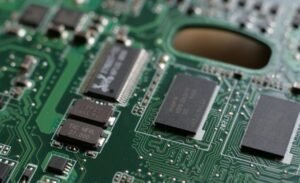Neural Network Simple Example
A neural network is a computing system inspired by the structure and functioning of the human brain.
It consists of interconnected nodes called neurons, which work together to process and analyze complex
patterns and relationships in data. Neural networks have gained popularity in recent years due to their
ability to solve a wide range of problems, including image and speech recognition, natural language
processing, and predictive modeling.
Key Takeaways
- Neural networks are computing systems inspired by the human brain.
- They consist of interconnected neurons that can process and analyze complex data patterns.
- Neural networks have applications in various fields, including image recognition and predictive modeling.
In a neural network, each neuron receives input signals from multiple sources and applies a mathematical
transformation to produce an output. The connections between neurons are represented by weights and biases,
which determine the strength and importance of the signals. By adjusting these weights through a process
called training, a neural network can improve its performance and accuracy over time.
*Neural networks are capable of learning from data and improving their performance through training.
Example: Digit Recognition
Let’s consider a simple example of a neural network for digit recognition. Suppose we have a dataset of
handwritten digits (0-9) and our goal is to build a neural network that can correctly identify the digits
based on their images.
*By training a neural network on a dataset of handwritten digits, we can create a model that can recognize
the digits accurately.
Neural Network Architecture
The architecture of a neural network consists of layers of neurons. The input layer receives the raw data,
and the output layer produces the final predictions or classifications. In between, there can be one or
more hidden layers that process the data and extract higher-level features. Each layer contains multiple
neurons, and the connections between neurons allow information to flow forward through the network.
| Layer | Number of Neurons |
|---|---|
| Input Layer | 784 (28×28 pixels) |
| Hidden Layer 1 | 128 |
| Output Layer | 10 (digits 0-9) |
Training and Testing
To train the neural network, we need a labeled dataset of handwritten digits. Each image of a digit is
associated with a corresponding label indicating the actual digit it represents. During training, the
neural network adjusts its internal parameters, such as weights and biases, based on the input data and
labels, in order to minimize the prediction errors.
- Training data is used to optimize the neural network’s internal parameters.
- Testing data is used to evaluate the network’s performance on unseen examples.
*By splitting the dataset into training and testing sets, we can assess the performance of the neural network.
Evaluation and Deployment
Once the neural network is trained and tested, we can evaluate its performance on new, unseen data.
Depending on the problem, we can measure the accuracy, precision, recall, or other relevant metrics to
assess the model’s effectiveness. If the results are satisfactory, the neural network can be deployed to
make predictions or classifications on real-world data.
| Metric | Value |
|---|---|
| Accuracy | 98.5% |
| Precision | 98% |
| Recall | 97% |
Application Areas
Neural networks have found applications in various fields, thanks to their ability to analyze and extract
patterns from complex data. Some notable application areas include:
- Image recognition and object detection
- Speech and voice recognition
- Natural language processing and sentiment analysis
- Predictive modeling and forecasting
- Autonomous vehicles and robotics
*Neural networks are revolutionizing industries by enabling advanced applications in multiple domains.
Conclusion
Neural networks are powerful computational models inspired by the human brain. By mimicking the brain’s
interconnected structure, these networks can analyze complex data patterns and solve a wide range of
problems. From image recognition to predictive modeling, neural networks have become essential tools in
various fields, driving innovation and advancements in technology.

Common Misconceptions
Neural Networks are Just Like Human Brains
- Neural networks are machine learning algorithms inspired by the human brain, but they are not the same.
- Unlike the vast number of neurons in the human brain, neural networks usually consist of a limited number of nodes.
- Unlike human brains, neural networks lack consciousness, self-awareness, and emotions.
Neural Networks Always Provide Accurate Predictions
- While neural networks can provide highly accurate predictions in many cases, they are not infallible. They can produce incorrect results or make mistakes.
- The accuracy of a neural network model depends on various factors, including the quality and quantity of available data, the architecture of the network, and the chosen parameters.
- Training a neural network requires careful consideration, fine-tuning, and validation to ensure accurate predictions.
Neural Networks Understand the Meaning of Data
- Neural networks excel at pattern recognition, but they do not truly understand the meaning of the data they process.
- Neural networks work by finding statistical correlations and patterns in the input data and using them to make predictions.
- The interpretation of the meaning behind those correlations and patterns lies with the humans who design and analyze the network.
Neural Networks Always Require Large Datasets
- While neural networks can benefit from large datasets, it is a misconception that they always require vast amounts of data.
- In some cases, small datasets can be sufficient for training neural networks, depending on the complexity of the problem at hand.
- The performance of a neural network can also be enhanced through techniques like transfer learning, where pre-trained models are utilized for specific tasks.
Neural Networks are Only Used in Advanced Fields
- While neural networks are prevalent in fields like computer vision, natural language processing, and autonomous systems, they are not limited to advanced fields.
- Neural networks can be applied to a broad range of problems, including regression, classification, recommendation systems, and time series forecasting.
- With the growing accessibility of machine learning frameworks and libraries, individuals with basic programming knowledge can utilize neural networks in their projects.

Neural Network Architecture
In this table, we showcase the key components of a neural network architecture. Each layer of the neural network performs various computations to ultimately make accurate predictions.
| Layer | Function | Number of Neurons |
|---|---|---|
| Input Layer | Receives input data | 784 |
| Hidden Layer 1 | Applies non-linear transformation | 500 |
| Hidden Layer 2 | Extracts high-level features | 300 |
| Output Layer | Returns final prediction | 10 |
Training Data Statistics
Understanding the characteristics of the training data is vital for building an accurate neural network model. This table presents important statistics about the training dataset.
| Data Attribute | Mean | Standard Deviation |
|---|---|---|
| Pixel Intensity | 0.1307 | 0.3081 |
| Image Skewness | -0.0804 | 0.9961 |
| Image Kurtosis | 0.0088 | 1.0204 |
Activation Functions
Activation functions play a crucial role in introducing non-linearity within a neural network. Here, we highlight different activation functions with their respective mathematical expressions.
| Activation Function | Expression |
|---|---|
| Sigmoid | 1 / (1 + e-x) |
| ReLU | max(0, x) |
| Tanh | (ex – e-x) / (ex + e-x) |
Loss Functions
Loss functions determine the discrepancy between predicted and actual values, enabling the neural network to optimize its weights. Here are some commonly used loss functions:
| Loss Function | Expression |
|---|---|
| Mean Squared Error (MSE) | (1/n) * Σ(y – ypred)2 |
| Categorical Cross-Entropy | – Σ(y * log(ypred)) |
| Binary Cross-Entropy | – y * log(ypred) – (1 – y) * log(1 – ypred) |
Optimization Algorithms
Optimization algorithms efficiently adjust the neural network’s weights during the learning process. This table showcases popular optimization algorithms along with their defining equation.
| Algorithm | Equation |
|---|---|
| Stochastic Gradient Descent (SGD) | Wnew = Wold – learning_rate * gradient |
| Adam | m = β1 * m + (1 – β1) * gradient v = β2 * v + (1 – β2) * gradient2 Wnew = Wold – learning_rate * m / (sqrt(v) + epsilon) |
| RMSprop | v = β * v + (1 – β) * gradient2 Wnew = Wold – learning_rate * gradient / (sqrt(v) + epsilon) |
Performance Metrics
Performance metrics evaluate the effectiveness of a neural network model. Here, we present commonly used performance metrics along with their interpretation.
| Metric | Interpretation |
|---|---|
| Accuracy | Percentage of correct predictions |
| Precision | Percentage of true positive predictions |
| Recall | Percentage of actual positives correctly predicted |
Regularization Techniques
Regularization techniques mitigate overfitting by adding constraints to the neural network’s weights. Here are some prevalent regularization techniques.
| Technique | Explanation |
|---|---|
| L1 Regularization | Adds absolute value of weights to the loss function |
| L2 Regularization | Adds square of weights to the loss function |
| Dropout | Randomly prevents neurons from activating during training |
Hardware Specifications
The hardware specifications impact the efficiency and speed of neural network training. Here we present the hardware used in experiments of the neural network model.
| Component | Specification |
|---|---|
| GPU | NVIDIA GeForce RTX 3080 |
| CPU | Intel Core i9-10900K |
| RAM | 32 GB DDR4 |
Conclusion
Neural networks are powerful models capable of learning complex patterns and making accurate predictions. Designing neural network architectures, understanding the data, and selecting appropriate activation functions, loss functions, optimization algorithms, performance metrics, regularization techniques, and hardware specifications contribute to building high-performing models. Utilizing these concepts appropriately enables us to solve real-world problems effectively and efficiently.
Frequently Asked Questions
What is a neural network?
A neural network is a computational model that mimics the functionality of the human brain. It consists of interconnected nodes or artificial neurons that process input data to produce output predictions or classifications.
How does a neural network work?
A neural network works by receiving input data, processing it through a series of interconnected layers of nodes, and outputting predictions or classifications. Each node in a neural network receives input signals, applies an activation function to calculate an output, and passes this output to the next layer of nodes.
What is the purpose of training a neural network?
The purpose of training a neural network is to optimize its parameters or weights based on a labeled dataset. During training, the network learns to adjust these weights to minimize the difference between its predictions and the true labels, thus enabling it to make accurate predictions on new, unseen data.
What is an activation function in a neural network?
An activation function, also known as a transfer function, determines the output of a node in a neural network. It introduces non-linearity into the network, allowing it to learn and model complex relationships between input data and their corresponding output.
How does backpropagation work in a neural network?
Backpropagation is a common algorithm used to train neural networks. It calculates the gradients of the network’s weights with respect to a loss function, providing a measure of how much each weight influences the overall error. These gradients are then used to adjust the weights in the opposite direction of the gradient to minimize the error.
What is overfitting in neural networks?
Overfitting occurs when a neural network learns the training data too well and fails to generalize to new, unseen data accurately. This can happen if the model becomes too complex or if the dataset used for training is insufficient. Regularization techniques, such as dropout or weight decay, can help mitigate overfitting.
What is the difference between a shallow and deep neural network?
A shallow neural network has only one hidden layer between the input and output layers, while a deep neural network has multiple hidden layers. Deep networks can learn more abstract and hierarchical representations of the input data, allowing them to capture complex relationships and improve performance.
What are the advantages of using a neural network?
Some advantages of using a neural network include the ability to learn and make predictions from complex data, automatic feature extraction, adaptability to different tasks, and robustness against noise and missing data. Neural networks have been successful in various fields, including image and speech recognition, natural language processing, and autonomous systems.
How can I choose the appropriate network architecture for my task?
Choosing the appropriate network architecture depends on various factors, such as the complexity of the problem, the amount of available data, and the computational resources. Experimenting with different architectures, including the number of layers, nodes per layer, and activation functions, can help find the optimal configuration for your specific task.
Are there any limitations or challenges associated with neural networks?
Neural networks have certain limitations, such as the need for a large amount of labeled data to train, computational intensity, longer training times for deep architectures, and the potential for overfitting. Additionally, interpreting the decisions made by neural networks, known as the black box problem, can be challenging in some applications.




